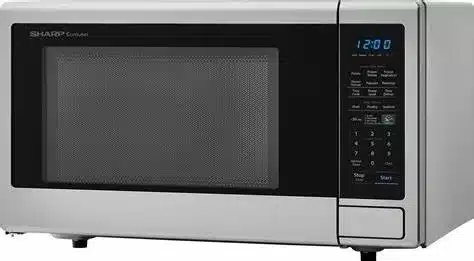
Microwaves have become an indispensable part of our kitchens, allowing us to quickly and conveniently heat up food. But have you ever wondered how microwaves actually work? In this article, we will dive into the science behind microwaves, exploring the technology behind these kitchen appliances and how they generate the heat necessary to warm our meals.
Microwaves use a form of electromagnetic radiation to heat food. This radiation is in the form of microwaves, which are a type of electromagnetic wave with a wavelength ranging from one millimeter to one meter. These microwaves are produced by a device called a magnetron, which is located inside the microwave oven.
The magnetron is the heart of a microwave oven. It is a high-powered vacuum tube that generates the microwaves used for heating food. Inside the magnetron, there is a filament that releases electrons when heated. These electrons are then accelerated by a high voltage and guided towards a resonant chamber that contains a series of cavities.
The cavities in the resonant chamber are specifically designed to resonate at the frequency of the microwaves, which is typically around 2.45 gigahertz. As the electrons pass through the cavities, they interact with the electric and magnetic fields present, causing the generation of microwaves. These microwaves are then emitted from an antenna located at the end of the magnetron.
When microwaves are emitted into the microwave oven cavity, they interact with the food placed inside. Microwaves have a unique property that allows them to penetrate the food and be absorbed by water, fats, and sugars present in the food. These substances are known as dielectric materials, meaning they can generate heat when exposed to an electric field.

As the microwaves are absorbed by the water molecules in the food, they cause the water molecules to vibrate rapidly. This rapid vibration generates heat, which then cooks the food. The heat is produced directly within the food, rather than being transferred from an external source, making the cooking process faster and more efficient.
Microwave ovens are designed with safety features to ensure that they can be used without any hazards. One such feature is the microwave oven cavity, which is made of metal and effectively contains the microwaves, preventing them from escaping. The glass door of the microwave is also designed to be transparent to visible light but reflective to microwaves, further ensuring that the microwaves stay inside.
Microwaves have revolutionized the way we heat our food, providing a quick and efficient cooking method. Understanding the science behind microwaves helps us appreciate the technology behind these kitchen appliances. From the magnetron generating microwaves to the dielectric heating process, every aspect of microwave technology comes together to make our cooking experience more convenient and time-saving.
